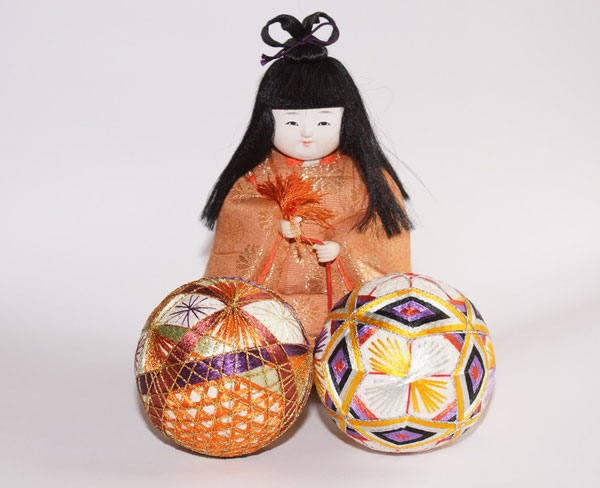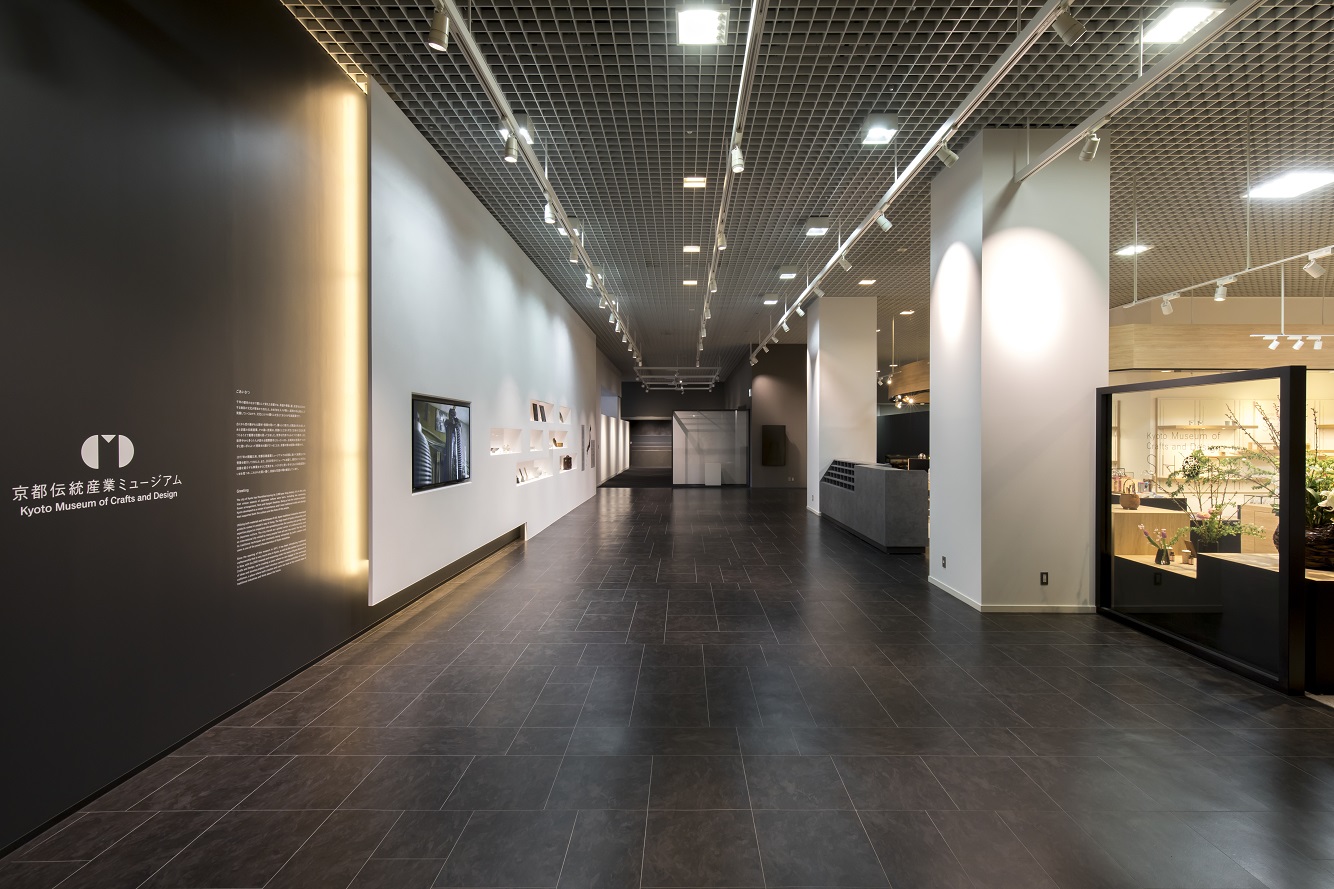
- Dolls, kokeshi
- Kyoto
Kyo doll Kyo ningyo
Elegant figures born from the artisans' expertise
Loved as gifts by all generations
Description
What is Kyo doll ?
Kyo dolls (called Kyo ningyo in Japanese) are produced in the city of Kyoto and its surrounding areas in Kyoto prefecture. They are made by several different artisans with their specialized expertise. There are doll head artisans as well as those specialized in making doll hands and leg parts, hair, accessories, and costumes. The key feature of any Kyo doll is the division of work in the production process, resulting in a high quality and elegant item. Currently, dolls that are officially recognized as Kyo dolls are Hina, Gogatsu, Gosho, Ichimatsu, Ukiyo, and Fuzoku dolls.
The Hina doll has the highest production among all the Kyo dolls and is the most commonplace. Additionally, this doll is displayed during the Girls' Festival, a special occasion that takes place every March 3rd.
The second most popular dolls are Gogatsu which are displayed during the Boys' Festival on May 5th. Types of Gogatsu doll include samurai, ruddy-faced boy dolls, and Shoki the Plague-Queller.
Gosho dolls, chubby babies with pale white skin, have a historical tradition of being given as gifts to feudal lords by the court during the Edo period (1603-1868).
The faces of Ichimatsu dolls (checkered patterns in Japanese) were made emulating an Edo period kabuki (a traditional movement based play) actor, Ichimatsu SANOGAWA, who was famous for his female roles that wore checkered patterns.
In addition, Kyoto, the production center of Nishijin brocade, produces Fuzoku and Ukiyo dolls as well. The dolls are dressed in costumes, representing the trends, customs, and fabrics of earlier times.
History
From ancient times, dolls have been used in spiritual ways, like being offered as the substitution of unfortunate situations such as plague or disaster. The meaning tied to these dolls is why they were called "human figures" or "substitutes".
During the Heian period (794-1185), with the blossoming of the aristocratic culture, the ritual purpose of such human figures started waning. Among the young girls at court, playing with Hina dolls was popular. This is considered to be the beginning of today's Kyo dolls.
During the Edo period, with the relocation of the center of the national administration to Edo (ancient name of Tokyo), hina asobi, literally "playing with hina dolls", traditionally occurred on the 3rd of March. These Hina dolls gradually evolved into the sitting figures of Hina doll. This is how the Girls' Festival was established, and the dolls transformed from toys to seasonal festival dolls celebrating the birth and growth of children. For the Boys' Festival on May 5th, decorative helmets and samurai dolls came to be produced. In Kyoto, a new doll culture was established and different types of dolls were produced one after another such as Saga, Kaga, Gosho, Fuzoku, and Ichimatsu dolls. The traditional techniques to make these dolls have been continuously passed down from generations to generations and continue to be developed today.
General Production Process
- 1. Production of the doll head
Firstly, a head form is carved out of wood and then dye, created from pine or resin, is used to make a mold. Paulownia wood dust is mixed and kneaded with fresh wheat gluten glue, and pressed into the mold before being dried in a furnace.
Then, the shape is modified by carving. Glass eyes are fastened into the sockets, and the head of the doll is coated with a mix of water, glue, and powdered calcium carbonate (gofun). Many layers of gofun are applied to build up the thickness of the head, until finally any unevenness on the surface is reduced with a cotton cloth.
After they are dried, the eyes and lips are cut with a small knife. The surface is smoothed with a scouring rush (type of herb that can be used like sandpaper) and more liquid gofun is applied. Then the eyebrows are drawn and lipstick is applied with the powder colors normally used for Japanese paintings. Using light Chinese ink, the hairline of the doll is meticulously drawn. Lastly, the head is polished with bleached cotton.
- 2. Hair production
The doll hair, made of raw black-dyed silk, is cut to a suitable length and then bundled. Grooves are carved with a knife into the scalp and hair is placed in every root groove with rice starch. A twisted paper string is applied to prevent the rice starch from being seen. The hair is pulled by the artisan's left hand, combed with a boxwood comb, has a heated hair iron applied and this process repeats over and over with a lustrous shine to hair being the result.
Finally the right and left sides of the hair are pulled up in a traditional Japanese style, and hair ornaments such as combs or hairpins are put in place.
- 3. Production of hands and legs
Firstly, paulownia wood is sawn and planed to a uniform length and thickness. Holes are drilled in preparation for the insertion of paper-wrapped wires that will become fingers. Wires are bent based on the desired finger shapes, and the wrist section is shaved and smoothed with a knife. With gofun and glue, a base coat is applied, and the five fingers carefully etched with a knife. After polishing with scouring rush, gofun and glue is applied to give a final coating. Color is then applied to the fingertips, and the nails are drawn on.
- 4. Accessory production
A wide range of accessories made for Kyo dolls according to the doll type include fans, bows, hats or Japanese straw sandals. There are also small wooden stands, dining tables, dressers, cabinets, large oblong chests, and even palanquins (a means of transportation).
- 5. Dressing the doll
Small rice straw bundles are wrapped with thread and Japanese traditional paper (washi) to make the torso. After being cut to the proper size, the torso has plywood bonded.
The neckband base, hands and legs (only hands for dolls of women) are attached. Wire is inserted into the torso and then it is fixed into a pose.
Now the costume is applied to the torso. For the neckband, kimono patterns are created using washi, and for the breast, pieces of fabric such as gold brocade or textiles are affixed. The fabric is cut and sewn according to the length and pattern design. The fabric is then stitched to prevent any loss of shape. The textiles used are fabrics made in Kyoto like Nishijin brocade.
Lastly, the doll's arms are bent to the desired pose.
- 6. Finishing touches
Once the hair is coiffed, the head is fitted. Finally, accessories are put in place.
The doll is given a thorough check to ensure the quality is perfect.
Where to Buy & More Information
Kyoto Museum of Crafts and Design

-
Address
-
Tel.+81-75-762-2670
-
ClosedDecember 29 to January 3
-
Business Hours9am to 5pm
-
Website
See more Dolls, kokeshi
- Hakata doll
- Iwatsuki doll
- Kyo doll
- Miyagi kokeshi doll
- Edo-kimekomi doll
- Suruga-hina doll
- Edo-sekku doll
- Suruga doll accessories
- Edo Oshi-e Pictures on Embossed Fabric































































































































































































































































































